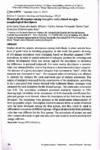Use este identificador para citar ou linkar para este item:
http://www.alice.cnptia.embrapa.br/alice/handle/doc/961911Registro completo de metadados
| Campo DC | Valor | Idioma |
|---|---|---|
| dc.contributor.author | RIBEIRO, I. C. N. dos S. | pt_BR |
| dc.contributor.author | SANTOS, C. A. F. | pt_BR |
| dc.contributor.author | LIMA NETO, F. P. | pt_BR |
| dc.date.accessioned | 2015-10-21T03:54:09Z | - |
| dc.date.available | 2015-10-21T03:54:09Z | - |
| dc.date.created | 2013-07-12 | pt_BR |
| dc.date.issued | 2013 | pt_BR |
| dc.identifier.citation | In: INTERNATIONAL MANGO SYMPOSIUM, 10., 2013, Bávaro, Punta Cana, Dominican Republic. Mango: opportunities and challenges in the 21 century. Punta Cana, Dominican Republic: CEDAF: CONIAF, 2013. | pt_BR |
| dc.identifier.uri | http://www.alice.cnptia.embrapa.br/alice/handle/doc/961911 | pt_BR |
| dc.description | Studies about the genetic divergence among individuals in plant species have been of great value in breeding programs. In this work the genetic diversity of 103 mango accessions were evaluated, based on Brazilian adapted UPOV descriptors, in order to permit selection of adequate genitors for crossings and cultivar development. Only one person applied the descriptors to minimize the difference in personal judgment. For some metric descriptors a numeric value was obtained before converting them to a determined descriptor category. The absence of a given descriptor category was converted to "zero", while the presence was converted to "one". The Jacquard index of similarity was adopted to estimate the distance for each individual pair of studied accessions. The matrix of similarity was used for the construction of the dendogram, according to the Unweighted Pair Group Method with Arithmetic Mean. Averages were estimated for each descriptor for the formed groups. The cophenetic correlation was 0.48. The accessions evaluated presented similarity superior to 24% showing high variability of the accessions. At 0.30 similarity cutoff point four principal groups were formed, where the descriptors of the fruit were the most divergent. The accessions were grouped in the dendrogram independently of their geographic origino Descriptors related to mature fruits or point of harvest were the most divergent among the four groups, and they could be used to differentiate accessions of different groups. Of special inters is the fruit epidermis color that was different for the four groups. The accessions of groups one and three contrasted to pulp weight and skin color and could be used to develop new mango cultivars. | eng |
| dc.language.iso | eng | eng |
| dc.rights | openAccess | eng |
| dc.subject | Descritor morfológico | pt_BR |
| dc.subject | Similaridade | pt_BR |
| dc.subject | Divergência genética | pt_BR |
| dc.title | Phenotypic divergency among Mangifera indica based on agromorphological descriptors. | pt_BR |
| dc.type | Resumo em anais e proceedings | pt_BR |
| dc.date.updated | 2015-10-21T03:54:09Z | pt_BR |
| dc.subject.thesagro | Manga | pt_BR |
| dc.subject.thesagro | Mangifera Indica | pt_BR |
| dc.subject.thesagro | Melhoramento Genético Vegetal | eng |
| dc.subject.nalthesaurus | Mangoes | eng |
| dc.format.extent2 | p. 36. | pt_BR |
| riaa.ainfo.id | 961911 | pt_BR |
| riaa.ainfo.lastupdate | 2015-10-20 | pt_BR |
| dc.contributor.institution | IERLA CARLA NUNES DOS SANTOS RIBEIRO; CARLOS ANTONIO FERNANDES SANTOS, CPATSA; FRANCISCO PINHEIRO LIMA NETO, CPATSA. | pt_BR |
| Aparece nas coleções: | Resumo em anais de congresso (CPATSA)  | |
Arquivos associados a este item:
| Arquivo | Descrição | Tamanho | Formato | |
|---|---|---|---|---|
| ID50456.pdf | 569,7 kB | Adobe PDF |  Visualizar/Abrir |









